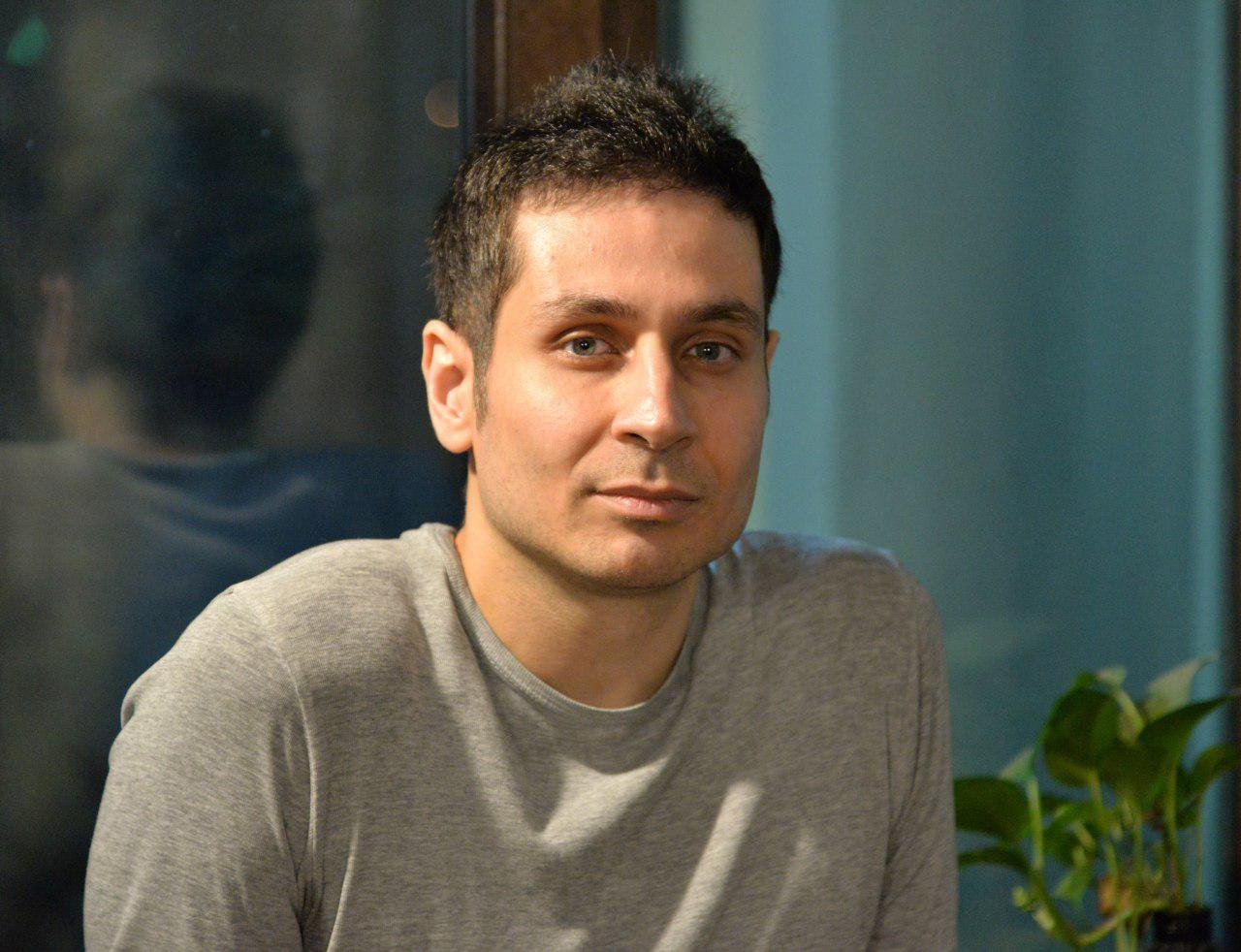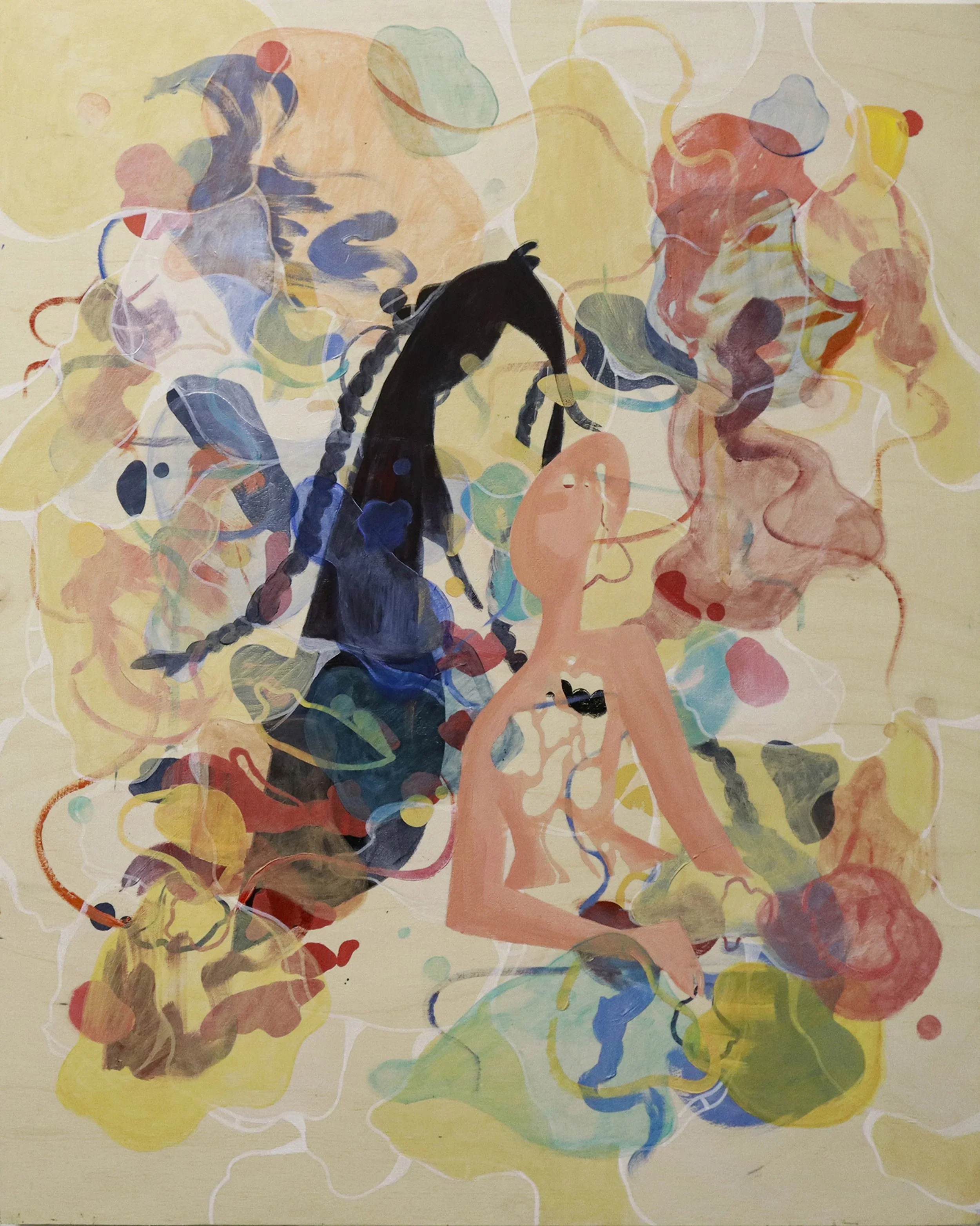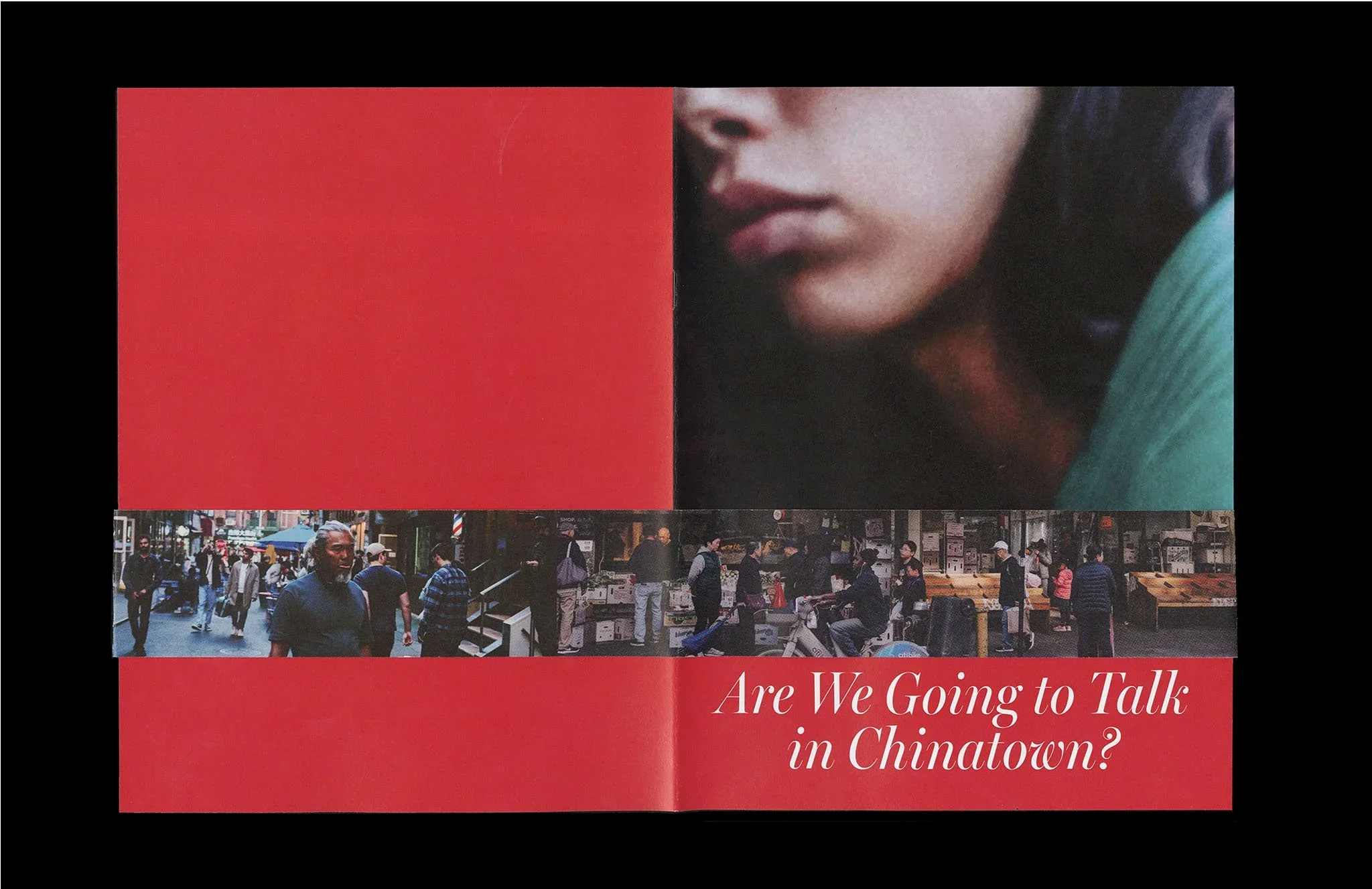10 Questions with Arman Khorramak
Arman Khorramak, a prominent artist born in 1986 in Tehran, Iran, has carved a niche for himself in the realm of visual communication. His journey in the world of art began with a Master's degree in Visual Communication from the Islamic Azad University of Central Tehran Branch, where he honed his skills and nurtured his creative vision.
Arman's accomplishments serve as testaments to his talent and dedication. In 2009, he made a significant mark by applying and printing five of his works in the prestigious "Worldwide Graphic Design book" by ZEIX, gaining recognition on an international scale. His contributions to the "Vitrin book," a compilation celebrating 35 years of contemporary Iranian book cover designs, further underscore his influence in the field.
Beyond accolades in print, Arman has expanded his artistic horizons through exhibitions and acknowledgments. In October 2021, he participated in a group exhibition titled "Micro-Macro" at Studio Fornaresio in Turin, Italy, showcasing his work alongside other esteemed artists. His involvement in the international selection of the Luxembourg Art Prize in both 2022 and 2023 earned him certificates of recognition, affirming his place among the global art community.
In November 2023, Arman was featured as a distinguished artist in the global art exhibition "Hi, Hey! Hello." hosted by the Dog and Bone Gallery in Brighton, England. The exhibition spanned both physical and virtual realms, underscoring Arman's versatility in adapting to contemporary art forms and platforms.
Arman Khorramak - Portrait
ARTIST STATEMENT
Ever since he was a child, he had a vivid imagination that allowed him to see things in a unique way. He would create stories in his mind and draw them out instead of talking about them. Words were never enough to express the depth of his inner world. Perhaps it was because he was an only child with few friends, or maybe it was his introverted personality. After graduating high school, he became fascinated with computers. Something special was happening in the computer world at that time, and he saw a strong connection between art and computers. This led him to pursue a career in graphic design. After years of working in graphic design, he realized that he was more interested in the basis of design than graphic apps. During this time, he learned how difficult it is to find common ground between his clients’ vision and his own. Despite having different opinions, he still had to consider his clients’ will. He wanted to create something unique, something that bore his signature. So, he began to explore other options. He remembered his childhood passion for drawing and decided to pursue it. However, this new path did not discourage him from graphic design. In fact, he wanted to do something great in his thesis. After studying different dissertations, he found semiotics to be an interesting scientific way of analyzing texts, especially artistic ones. He applied semiotics to analyze and interpret the book cover designs of Cheshmeh Publications, one of the most famous publishers in Iran. After defending his thesis, he used his thesis’ solutions to the book covers of a publisher he had been working with (Beheshti University Press).
After a decade of designing graphics, he felt the urge to explore new horizons. He embarked on a journey of self-discovery, trying his hand at designing typefaces, recording audiobooks, and attending a short story writing class. In that class, he learned how to narrate a story to capture his audience’s attention. One day, one of his clients suggested illustrating her poems for a book. It was an excellent opportunity for him to create work routinely and a chance to express himself. He was not required to draw something similar to the poems; consequently, he could work on his interpretations based on his personality and background. This series of works comes from that specific period. His process was fueled by his passion for music and his love for literature and cinema, which he blended into his artwork.
A Talk with the Translator, Pencil on paper, 29.7x41.5 cm, 2020 © Arman Khorramak
INTERVIEW
First, tell us a little about your background and studies. What kind of education or training helped you develop your approach to art?
My journey began with a major in English language teaching at university. However, I soon discovered that it wasn't the right fit for me. Despite not despising it, I felt a pull towards something different. As the new semester was about to commence, I embarked on a job hunt. This was no easy task for an 18-year-old with no expertise or experience.
During this time, graphic design emerged as a beacon of art that I could learn and many people seemed to be gravitating towards it. I enrolled in an institute that paved my way into the job market. After mastering a series of graphic software, I entered the job market a few months later, coinciding with the start of my university. My motivation was twofold: financial independence and a desire to fill the void between high school graduation and university commencement.
Consequently, I found myself commuting between university and a company that had employed me as a junior graphic designer. As I continued to work and showcase my work to other companies, I realized a gap in my understanding of design fundamentals. This led me to enroll in private design classes.
After a year of working in various offices and a printing house, I landed a job in a publishing office. On the other side, the university introduced me to linguistics, a subject that captivated me. Upon completing my bachelor's degree, I decided to pursue further education in graphic design.
Even before stepping into art university, I was determined to produce a commendable thesis. Given my years of experience in book cover design, I chose a related topic: a review of the book cover designs of Cheshmeh publications. Cheshmeh, a successful publisher known for its influential books and striking cover designs, was my focus. However, I was unsure of how to structure my analysis of the cover designs.
My breakthrough came when I stumbled upon semiotics during library research. Interestingly, semiotics was introduced by a linguist, Ferdinand de Saussure, which connected me back to my previous university experience. The use of semiotics for analyzing book covers marked a turning point in my worldview and interpretation of different texts. This newfound perspective even influenced my subsequent graphic works.
Eventually, I realized that my ideas needed a different medium to flourish. Both before and after university, I took drawing lessons, it was then that I turned to drawing as a means to express my ideas.
Attention. Handle with care, Pencil on paper, 29.7x41.5 cm, 2022 © Arman Khorramak
Sometimes, Pencil on paper, 29.7x41.5 cm, 2020 © Arman Khorramak
Do you remember the moment you decided to become an artist? And what inspired you to follow this career path?
From a young age, I found myself adept at bringing my imagination to life through drawings. I would sketch out images that sprang from my mind, their origins often a mystery even to me. I was deeply influenced by the animations and illustrations in books, often finding myself more captivated by the pictures than the stories they accompanied.
Recognizing my talent, my parents (specifically my mom) exposed me to various exhibitions and festivals and enrolled me in painting and sculpture classes. The images on books, calendars, and postcards stirred excitement within me. I was unaware of how these creations came to be and who was behind them, but I knew I loved them and found myself drawn to them repeatedly.
As an only child who struggled to connect with peers, I lacked the typical social interactions. Instead, I found solace in children's audiobooks, creating stories and connections in my mind inspired by the images I visualized.
I also developed an interest in video games, particularly captivated by the atmospheric elements of games like "Soul Reaver". The world Amy Hennig had crafted intrigued me. I found myself wondering about the origins of these forms and colors and their otherworldly nature. It was only years later that I discovered Hennig's influence from John Milton's Paradise Lost and realized the profound impact literature can have on our mental landscape.
I yearned to create a world akin to theirs, but my attempts fell short. The drawings I produced were different from what I envisioned. The decision to pursue this path wasn't a conscious one; it simply happened.
Can you explain why you transitioned from graphic design to exploring other creative avenues like typeface design, audiobook recording, and short story writing?
After years of working in book cover design and completing my thesis, I found myself in a state of stagnation. The passion that once fueled me seemed to have dwindled. I felt a sense of age and weariness in the publishing office. This feeling, which had been subtly brewing since 2009, was nebulous and hard to pinpoint.
Creating a book cover that encapsulated the essence of the book had lost its charm for me. I grew weary of client interactions and the inability to express my creativity. Post-thesis, I felt adrift and forsaken. It was then that I realized the need for a fresh experience.
In my quest for fulfillment and a source of income, I explored various avenues beyond the activities you mentioned. Typeface design, being closely related to graphic design, seemed like a viable economic prospect. I decided to focus on one of my experimental works from previous years and ventured into this domain. While it was a rewarding activity, it didn't quite satisfy my desire.
Through my peripheral activities, I discovered the world of audio content production. One day, a colleague suggested I listen to a short audio story. It was enthralling! I found myself replaying it over 30 times, often while working on letters, until I decided to create one myself.
My interest in literary fiction, which sparked after finishing school, was further kindled by my work in the field of audiobooks. It encouraged me to delve deeper into stories and their narration. This led me to question why I shouldn't explore another field.
I had a friend who was into painting and attended Abbas Maroufi's story classes. Intrigued, I asked if I could join the classes, marking the beginning of my journey in story writing. I vividly remember Maroufi's words about Scheherazade's captivating storytelling that persuaded the king to spare her life night after night. This resonated with me and influenced my later visual works. I strived to create content that would engage the audience, making them want to linger, even if they didn't fully grasp its concept.
God is the verb, Pencil on paper, 29.7x41.5 cm, 2022 © Arman Khorramak
Untitled, Pencil on paper, 29.7x41.5 cm, 2022 © Arman Khorramak
As you mentioned in your statement, you worked as a graphic designer. What challenges did you encounter in balancing your clients' visions and your creative instincts in graphic design?
It took some time for me to understand that the role of a graphic designer is to devise an appropriate solution to a given problem. While I was aware of this during my work, my understanding has deepened over time. The visual solutions I proposed were born from my own perceptions, but they often fell short of what was required. The ideas I harbored were more personal concepts than products intended for client approval.
I found myself having to align with the needs of the project, even if it wasn't in line with my personal preferences. One of the most challenging aspects of my job was convincing the client of the rationale behind my image choice for their product. I yearned for the freedom to illustrate my interpretations, rather than conforming to someone else's vision.
Nowadays, what is your creative process like? How do you go from the first idea to the final outcome?
When I immerse myself in a story, lose myself in music, or find my rhythm in a run, images begin to form in my mind. I jot these down in my usual idea repository, which serves as a canvas for both my stories and drawings. At times, these ideas are an amalgamation of one to three or more concepts that I've previously noted down. Occasionally, they're sparked by photographs.
Next, I sketch out these ideas. I then engage in discussions with like-minded individuals, sharing my ideas or showing them my sketches. Their feedback often leads to modifications in my sketches. Gradually, I steer the idea towards a more specific direction, making alterations in the elements, and adding or removing parts to achieve a more cohesive concept.
At this stage, I undertake a visual study of the elements I want to incorporate into the combination. The details are crucial to me - the texture, time, place, and their interactions. However, this process is not without its conflicts. Hence, I strive not to obsess over it much, mindful of the risk of procrastination and abandoning the work.
Catching the meaning, Pencil on paper, 29.7x41.5 cm, 2021 © Arman Khorramak
God is the harmony, Pencil on paper, 29.7x41.5 cm, 2021 © Arman Khorramak
How do your passions for music, literature, and cinema inform and inspire your artwork?
Cinema has been a significant influence, painting vivid images in my mind. One of the most striking images is from the movie "Terminator 2". In a memorable scene, T-800, portrayed by Arnold Schwarzenegger, retrieves his weapon from a box, roses tumbling out and one getting crushed under T-800's iron foot. This scene, a testament to James Cameron's visualization prowess, is one I find myself revisiting often.
Music has been another source of inspiration, providing both imagery and rhythm. Ambient music, in particular, offers raw forms that serve as a springboard for my ideas. The rhythm aids in my drawing process, dictating the intensity and speed of my strokes.
Literature's influence has been more subtle. For instance, the idea of a glass house in Milan Kundera's "Unbearable Lightness of Being" resonated with me, and I found myself incorporating it in a different context years later. Literature is a treasure trove of images and concepts that help shape my own images, intertwining with personal memories to create something uniquely mine.
Where else do you find inspiration? Do you draw for personal experiences and everyday life, or do fictional elements solely inspire you?
My journey in drawing has been a diverse one. There was a phase when my work was heavily influenced by my emotional state and daily psychological experiences, resulting in portraits and figures that were a reflection of these stimuli. However, I now find myself in a phase where my imagination takes the lead. The creation of these imaginative pieces requires a disciplined routine and a great deal of patience. While my current works are a departure from my past, they still carry echoes of my previous experiences, albeit in a sign-oriented and narrative form.
How did your interest in semiotics influence your approach to analyzing and interpreting book cover designs?
Grasping semiotics as a dynamic analytical method enabled me to interpret elements within their specific context, rather than as static concepts. To illustrate, consider an image accompanied by a title; the interpretation of the concept can change based on the title, even if the image remains the same. Similarly, a tree in one pictorial composition could symbolize life, while in another, it could represent wisdom. This understanding extends to how an element can be repurposed as a sign, even if it wasn't previously.
The whispers of yesterday, Pencil on paper, 29.7x41.5 cm, 2022 © Arman Khorramak
Is there anything else you would like to introduce in your work? Any new theme or technique you would like to experiment with?
At present, my ideas inhabit a different space, though this is the same technique I used to apply in the previous collection. I feel a sense of compatibility between this technique and my current ideas, which makes me believe I can continue working with it. However, I'm open to exploring other mediums for my ideas in the future. I might even pursue a medium that transcends two dimensions, incorporates movement, and is complemented by music.
And lastly, what are you working on now? Do you have any new projects or exhibitions you would like to share with our readers?
As previously mentioned, I'm currently working on a collection that employs the same technique as before, but in a distinct space. There's a chance that I might revisit and recreate some of my previous works, introducing changes in both the composition and content. This is a process I've undergone several times, and I anticipate it happening again. Concurrently, some etudes are due for revisions.
The new collection bears traces of my previous works, but some pieces exhibit increased interactions among the elements and even the people. The inspiration for these new works was born while working on previous ones and listening to music. I jotted down these ideas and then sketched them out. Despite their similarities, they evolved into distinct ideas, likely influenced by my mental state during the creative process.
Artist’s Talk
Al-Tiba9 Interviews is a promotional platform for artists to articulate their vision and engage them with our diverse readership through a published art dialogue. The artists are interviewed by Mohamed Benhadj, the founder & curator of Al-Tiba9, to highlight their artistic careers and introduce them to the international contemporary art scene across our vast network of museums, galleries, art professionals, art dealers, collectors, and art lovers across the globe.
























